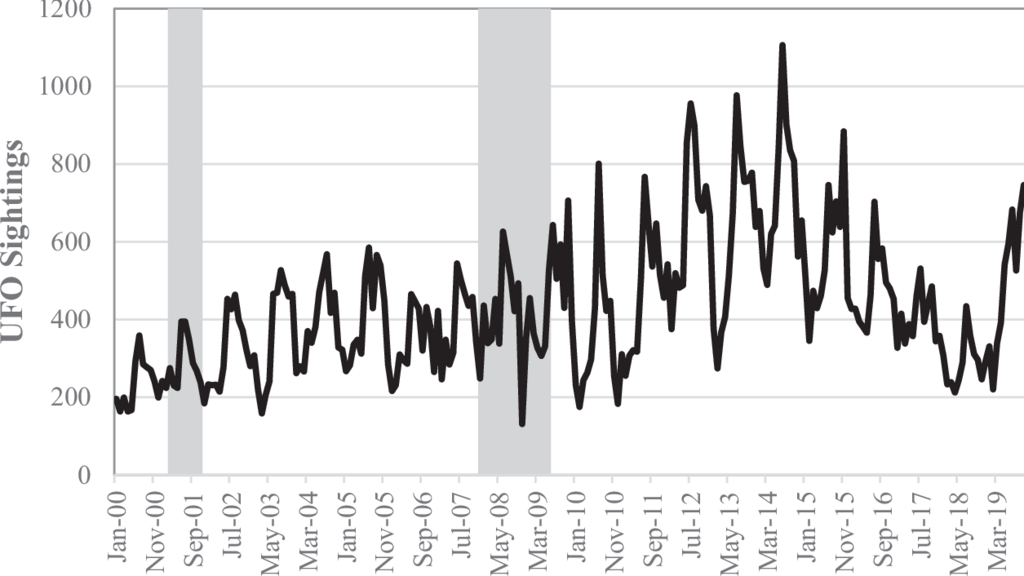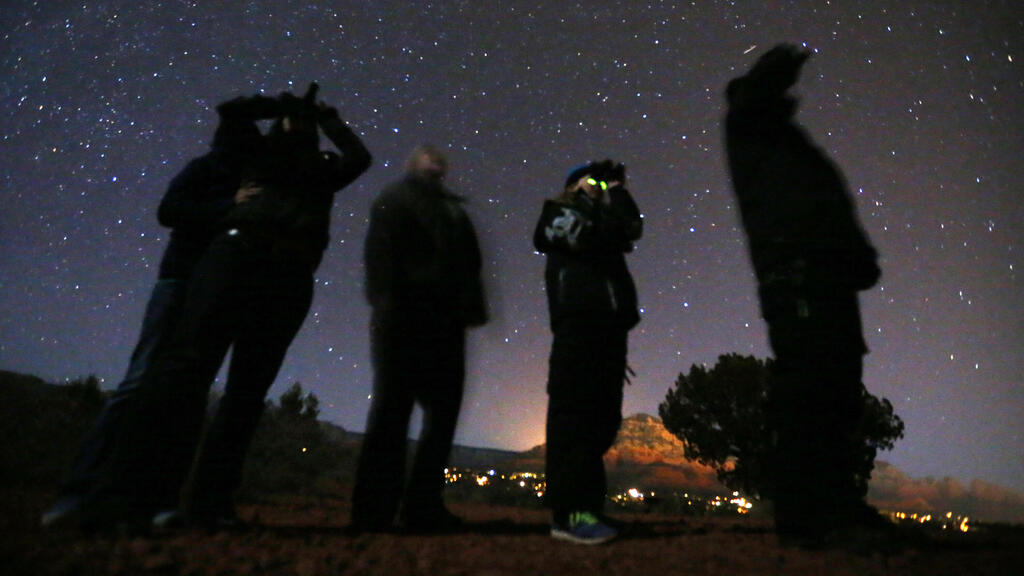Israeli study finds surpiring link between UFO sightings and economic status
Attention to data plays a central role in contemporary macroeconomic analyses, but measuring it presents a challenge, particularly when covering varying geographic levels and time frequencies.
Clips of alleged UFO sightings
In a study published in the Humanities and Social Sciences Communications journal, the researchers discovered a surprising link between reports of these phenomena and macroeconomic conditions at the county, state and national levels in the U.S.
After accounting for weather conditions and external factors, they found that reports of such phenomena were more common in wealthier regions, though a counter-cyclical trend was observed within those regions as well.
The fluctuations in attention to extraordinary phenomena in the skies reflect broader patterns of changes in public attention.
“In our study, we examined the relationship between the attention U.S. county residents pay to the skies (UFO sightings from 2000 to 2020) and the attention they give to economic factors, aiming to see if there’s overlap,” Dr. Raveh explained in an interview with Ynet.
“To our surprise, we found a strong positive correlation between economic attention and UFO sightings, even when considering factors like weather, mental health and more,” he added.
The researchers supported their interpretation by relying on external regional variations in COVID-19 restrictions, finding evidence of a causal impact on public attention. They also demonstrated that the UAP reporting metric closely correlates with traditional attention metrics based on expectation data.
The researchers applied their metric in the context of monetary policy transmission — defined in macroeconomics as the management of nominal variables in the economy, including the money supply and payment instruments relative to output. They found it explained significant regional variation in responses to monetary shocks.
Higher levels of attention across U.S. regions, as well as within regions during business cycles, significantly reduced the impact of contractionary monetary policies (e.g., central bank interest rate hikes).
Dr. Raveh highlighted the practical implications of the findings, which span public attention measurement, geographic economic variability, monetary policy planning, attention during economic downturns and COVID-19 effects.
“Reports of unidentified aerial phenomena serve as an indirect but effective indicator of public attention to unusual events. The study shows that these reports are linked to economic conditions, meaning they can be used to understand how attention shifts based on economic circumstances,” said Dr. Raveh.
“We found that wealthier areas report more unidentified aerial phenomena, while such reports increase during economic recessions within specific regions, suggesting that public attention shifts more toward unusual events during times of crisis,” he added.
“These patterns align with standard macroeconomic attention metrics. Moreover, the UAP metric helps predict how different regions respond to monetary policy decisions like interest rate changes. In areas with high attention levels, for instance, interest rate hikes may have less impact on consumer and business behavior.”
2 View gallery


Graph showing the number of reported UFO sightings in the U.S.
(Illustration: Humanities and Social Sciences Communications)
Dr. Raveh further explained that the public showed increased attention to unusual phenomena (like UAPs) during recessions, likely due to having more free time or a decline in distractions caused by other economic factors.
“Our findings also indicate that the COVID-19 pandemic, with its movement restrictions and lockdowns, led to a significant rise in UAP reports, suggesting that when daily pressures ease, public attention shifts more toward extraordinary events. Our study also touches on observations near military installations, where high levels of attention to UAPs have been noted,” Dr. Raveh added.
Dr. Goldstein and Dr. Raveh’s study presents an innovative approach to evaluating and measuring public attention in an economic context, reflecting how this attention influences regional responses to economic policies.
“This is the first study of its kind to examine UFO sightings in a socio-economic context. Academically, it introduces a novel method for measuring macro-level attention, enabling its assessment across time and broad geographic distribution,” Dr. Raveh concluded.





